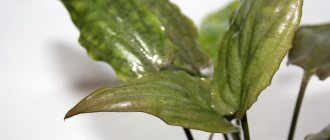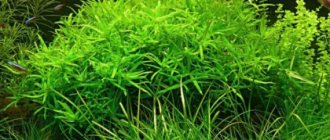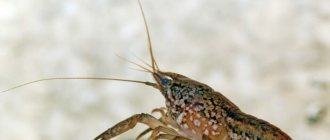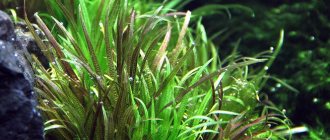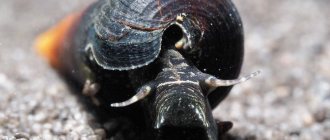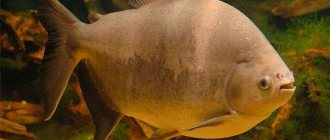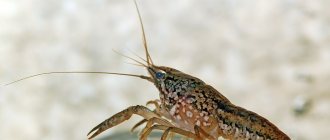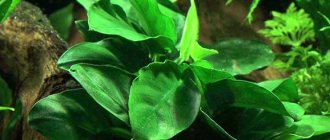One of the most unusual lizards in the world is the blue-tongued skink. This creature is not picky, calm and friendly. It is perfect for home keeping and quickly becomes attached to its owner. Such lizards will appeal to both beginners and advanced breeders. It is possible to breed skinks yourself, although this is not an easy task.
One of the most unusual lizards in the world is the blue-tongued skink. This creature is not picky, calm and friendly.
Description and habitat
Skinks are lizards widely distributed throughout the globe. They are distinguished by their unusual appearance due to their surprisingly smooth, fish-like scales. Underneath it is the osteoderm. This is a bone layer consisting of plates. Rough cover only in a few varieties. The small snake-like head of the reptile has scutes arranged symmetrically.
The temporal bones of the strong skull are well developed and protrude slightly from the sides of the head. The submandibles are partially fused. The crown is solid with a hole for the parietal eye. The conical sharp teeth of the skink are slightly curved, only in some herbivorous species they have a different (rounded) shape.
The pupil is large and round, the eyelids are separated, in some varieties the lower ones are transparent, so the lizard can watch predators even with its eyes closed. And Gologlaz’s eyelids are fused, they form a transparent lens, which enhances his resemblance to a snake.
The skink family is distinguished by such a variety of forms that it is quite difficult to give a single description of the limbs. In some lizards they are normally built and have fingers, some have short legs and reduced ends, and some are completely legless, very similar to a snake. Some tree-like skinks have bony plates on the inside of their legs, with the help of which they easily move along trunks and branches. They look a bit like geckos.
The tails of these reptiles also differ in length; some have very long ones, but such a species as the short-tailed skink is also known. For the most part, the tail serves to store fat deposits, but in a moment of danger the lizard discards it and runs away, misleading the predator.
The coloration is also varied, most have a dull body, but such varieties as the fiery and emerald Skinks are known.
Body length varies greatly. The smallest ones barely reach 6-8 cm, for example, the Far Eastern, and the gigantic and prehensile-tailed Skink is more than 70 cm.
Some species live in the tropics, others in Australia, Asia and Africa. In our country you can find the Far Eastern Skink. This reptile can safely be called a cosmopolitan.
The habitats of skink lizards are also different - deserts, humid forests, tropics, temperate latitudes, shores of small reservoirs (near-water species). Most of these reptiles are carnivores, but there are also omnivores, molluscivores and herbivores.
Most often, skinks lead a terrestrial lifestyle; only a few can swim and climb trees and rocks.
Reproduction methods are varied - skink reptiles are known to lay eggs, give birth to live young, and are ovoviviparous.
Photo gallery of Skinks:
Mr. Tail recommends: varieties
The skink lizard is currently divided into four subfamilies, but scientists believe that this classification will be changed in the coming years:
- Akontieva (Acontinae);
- Ligosomal (Lygosominae);
- Scincinae;
- Blind (Feylininae).
Here are just a few of the most famous and interesting species for exotic lovers. It is believed that blue-tongued, crocodile, and common skinks are more suitable for home keeping, but other varieties are increasingly found in terrariums. All these reptiles delight owners with their obedience, exemplary behavior and ability to quickly tame.
Common Skinks
Pharmacy skinks (Scincus scincus) got their name because in ancient times, the ashes after burning the bodies of lizards were used as a remedy and an aphrodisiac in Arab countries, and in Ancient Egypt, embalmed reptile mummy was buried along with the dead.
The maximum body length of the animal, which lives mostly in the Sahara, other countries of Africa and South-West Asia, is about 20 cm. This Skink is also called sand fish, since the lizard is capable of moving in the desert at speeds of up to 15-20 km/h. The video footage shows that the movements of the reptile resemble swimming, and the sand flows off the smooth scales without scratching them.
Scientists suggest that the micro-protrusions on the lizard's scales have an electrical charge, which are repelled by grains of sand (they are negatively charged).
Short-tailed Skinks
Trachydosaurus or Trachysaurus is a species of skink that also belongs to the genus Tiliqua. This is a variety of the Blue-tongued Australian Skink.
The species was described back in 1825 by the English scientist John Edward Gray. A strong and heavy body with an acute-angled head of brown tones (from light to dark), and its maximum length is 36 cm. They live in the steppes and semi-deserts of Australia. Omnivorous. Natural enemies of short-tailed animals are Dingo dogs and Australian pythons, foxes and cats. Aboriginal people still eat lizard meat today.
The tongue is also blue, but this reptile cannot cast its tail due to its anatomical features; for it it is only a storage of fat reserves.
Giant or Australian Blue Tongue Skinks
Tiliqua scincoides is a large lizard, some representatives reach a length of 60-70 cm. The body is large and strong, of various, often inconspicuous colors, the tail is slightly more than half the length of the body. The paws are short, with five toes. The giant's homeland is deserts, semi-deserts, steppes, savannas, rainforests of Australia, New Guinea, and the islands of Oceania. This species has many subspecies with different biotypes.
They are omnivores, but prefer plant foods. They lead a diurnal lifestyle, but in the hottest times they try to find shelter in holes, cracks, and tree trunks. This is a territorial species, actively protecting its habitat, although in other cases it is peaceful.
In appearance, gender differences are not visible. They can be identified only by the behavior of individuals during the mating season - the male holds the female by the neck with his teeth during mating (September-November).
The subspecies most often kept in captivity has a dark brown body background with bright orange patterns. The oral cavity is deep red, and the color of the tongue is deep blue to purple. Life expectancy is up to 20 years.
These pets are smart, recognize the owner, recognize their nickname and some commands. They are very affectionate and love to be held and petted. You can even walk outside with these Skinks. They behave calmly in the house, sleep at night and do not bother anyone. For keeping, it is better to choose lizards of different sexes or one lizard, since two males can quarrel over territory.
Crocodile skinks
The body dimensions of this lizard are small - 17-19 cm. But the head is disproportionately large in relation to the body, which makes it look like a miniature dinosaur or dragon. A ridge of four rows of bone plates with needles runs along the ridge. The upper part of the body is brownish in color, and the abdomen is much lighter. The bulging large eyes are surrounded by orange rings, which gives the variety its name. This color is characteristic of crocodiles.
The lizard's homeland is the islands of Papua New Guinea. They settle near bodies of water in tropical rainforests and coconut groves. They swim well, so it is necessary to provide a small pond in the terrarium. These mini-crocodiles do not tolerate temperatures above +30 ° C, they are in a hurry to dive into the water, and can even move along the bottom.
The paws are quite long with five thin toes. The reptile can cast off its long tail.
Males are larger than females and have larger heads. The toes on the hind legs are coarser, and on the abdomen there is a corpus callosum for copulation.
They are capable of making sounds and can frighten with their sharp screams. In addition, they like to pretend to be dead. They are nocturnal, so they must be kept in a terrarium; they should not travel alone around the apartment; these Skinks run quickly.
Fire skinks
These lizards are from equatorial Guinea, Cameroon, Morocco, Congo, Gabon, Nigeria, and Kenya. They live in the lower layer of humid forests (litter forests), prefer to hide in burrows all day, and are active in the evening and at night.
Their long body (up to 40 cm, most of which is a thick tail) is brightly colored. Usually the back is bright yellow, even golden, and on the sides there is a flashy black and orange pattern, but there are also almost black individuals, without stripes or ornaments. The short legs are glossy, dark, with five toes. The head merges smoothly into the body, like a snake.
These animals are usually sedentary and calm, but if they get scared, they can bite quite hard; their jaws are powerful. This is an omnivorous type.
Sexual dimorphism is very poorly developed; only an experienced breeder can determine it by appearance.
Grain-tailed skinks
A large lizard about 70 cm long, weighing up to 1 kg, an endemic species of the moist forests of the Solomon Islands. A large, heavy body with a large, blunt head is usually dark green in color. The paws are long with well-developed toes, a tenacious long tail and the limbs have the ability to firmly hold on to tree trunks when moving.
Leads a nocturnal lifestyle. Quite calm and peaceful, but actively defends its territory (both males and females). It is herbivorous, but young individuals also eat live protein foods.
Grain-tailed skinks live in stable families consisting of a male and one or two females. These lizards are viviparous; pregnancy lasts from six to nine months and ends with the birth of one, rarely two, cubs. Sexual maturity occurs at the age of one year, when the young Skink leaves the family.
Grown-up individuals are always expelled from the harem, but at the same time they can accept a small orphan into the family group.
The species is included in CITES Appendix 2, as the number of prehensile-tailed skinks is declining from year to year.
As a pet, it behaves very calmly in a large vertical terrarium with many plants and driftwood.
Pink tongue skinks
Hemisphaeriodon gerrardii is an endemic species of tropical eastern Australia. Adult individuals reach a body length of 45-50 cm, but weigh no more than 150 g. There are about 30-33 rows of smooth scales on the body, usually greenish, grayish, brownish shades. The head is large, the long and thick tail makes up half of the body. The paws and slightly reduced toes are well developed. They lead an arboreal lifestyle.
The coloring of each individual is unique, there are stripes and spots on the body, and the color of the scales is such that it allows the lizard to blend in with its environment. But up to 4 months, the coloring is bright - with black and red markings, and the dark blue tongue becomes pink by the end of the first or second year of life.
This is a molluscivorous species that prefers to feed on small snails. Gerardi's gender cannot be determined externally. As pets, they show themselves to be intelligent, calm and peaceful creatures.
Emerald Skinks
These are Indonesian Dasia lizards that live in tropical forests high in trees (from 1 to 6 m). They are divided into four subspecies. The most common in terrariums has a bright green, emerald body up to 23-25 cm long, the belly is lighter, with a bluish tint. There are yellow stripes on the sides of the head and dark stripes on the body. The housing in the house for these creatures must be made vertical, with a height of at least 1 m, since they feel uncomfortable at the bottom, accustomed to hiding from predators in the treetops during the day.
Very intelligent and peaceful creatures that can get along, for example, with Madagascar geckos - they have similar habitat parameters.
They quickly get used to their household and run to the terrarium door when they see a person, expecting food. It is better to keep Emerald Skinks in a male-female pair.
Far Eastern skinks
Plestiodon latiscutatus is a very beautiful small (9-18 cm) and slender lizard that lives on the Japanese Islands and the Kuril Islands. The long tail (up to 15 cm) is usually brighter than the body. If the body is gray, black, greenish, then the tail has an emerald tint.
They usually live along bodies of water, can swim, and prefer to eat insects and small invertebrates, and snails.
In our country, the species is included in the Red Book, is protected by the state and actively reproduces in the Kuril Nature Reserve.
These are diurnal animals that live in damp earthen burrows.
Three-toed skinks
Yellow-bellied three-toed skinks are native to Australia. Moreover, not only their limbs are amazing - small with tiny three fingers and a long snake-like body-tail (up to 18 cm), but also their method of reproduction.
Individuals in the hot southern coastal regions of the continent lay eggs, and in the cold northern regions they are viviparous.
The body is painted in brown, light chocolate glossy colors. These are nocturnal inhabitants of steppes and forests (litter dwellers), leading a nocturnal lifestyle and feeding on insects.
Appearance of a crocodile skink
The entire body is covered with pointed scales. On the head of males they are especially well developed; they form a kind of horns directed backwards. There are 4 ridges of scales with sharp spines running along the back to the tail. Thanks to these ridges, the skink was called crocodile.
Crocodile skink (Tribolonotus gracilis).
The body color is not bright, brown. Thanks to this color, the skink remains practically invisible against the background of the soil. The abdomen is yellowish-orange. The head is quite large, especially in males, and the jaws are powerful. The throat may be orange in color.
The eyes have a bright yellow shell, they themselves are black and convex. The eyes are framed by bright orange spots, which are a characteristic feature of orange-eyed skinks.
Crocodile skinks have a slender body; males are larger than females. Males, as noted, have a larger head, large protrusions in the back of the head, and in the navel area there is a corpus callosum, necessary during the mating process. Females do not have such a body. Among other things, the shape of the scales on the two toes of the hind legs of males is changed, that is, their paws are calloused, while those of females are tender.
Basics of home maintenance and care
For skink pets, it is necessary to equip a suitable terrarium with conditions that imitate their native habitat.
The most popular for home keeping are Australian blue-tongued Skinks. Their terrarium is of a horizontal type, since in the wild they lead the lifestyle of litter dwellers - inhabitants of the lower layer of forests and steppes, semi-deserts.
It is better to use soft wood shavings, broken tree bark, and mats made of synthetic materials as filler for the bottom of the tank. Gravel and sand are undesirable; lizards may ingest the substrate, and solids will cause gastrointestinal blockage.
Shelters for reptiles are necessary - made of stones and driftwood. You can also make shelves for climbing.
We also need UVK lamps for heating and heating mats. The optimal daytime temperature is +25...+31 °C, under the springs themselves up to +35...+36 °C, night temperature is below +19...+23 °C.
At least twice a day, you need to pick up the reptile and talk to it affectionately. Pets need to be accustomed to humans during feeding times. At first, it is better to wear gloves to avoid painful bites. But this is not an attack, but fear and defense, this reaction will quickly pass.
A shallow drinking bowl with daily water changes is also necessary. You need a glass lid with air holes to prevent escape.
You need to be careful with plants in the terrarium, some species can be poisonous and dangerous for the Skink; it is better to use artificial ones for decoration.
For arboreal species, for example, prehensile-tailed terrariums, terrariums are made of a vertical type, at least a meter high, and have artificial “trees” for climbing. For such Skinks, the temperature in the tank is set below +30 ° C, and the humidity is high, usually a small pond is created.
Feeding
The diet of skinks should be varied:
- Fruits - pieces of apples, pears, bananas, watermelon.
- Vegetables - cucumbers, zucchini, lettuce and spinach, carrots, pieces of cabbage and tomatoes.
- Flowering parts and sprouts of wild plants.
- Live food in the form of feeding insects (cockroaches, crickets, termites, spiders), mollusks and baby mice.
- Chicken and quail eggs, boiled and raw.
- Meat - in the form of raw pieces, minced meat, canned food for dogs and cats.
The majority of the diet should consist of plant foods; vitamins and minerals in the form of supplements are used specifically for reptiles; they can be purchased at a pet store.
Diseases
Most often, Skinks suffer from overeating. They are very gluttonous, and if they are not limited in food, obesity occurs and, as a result, infertility and loss of interest in the opposite species.
It is especially necessary to monitor the diet of adult individuals. Young animals have an increased metabolism and happily absorb animal food, but for older reptiles, you should choose the vegetable part, the protein part in this case is only minimal bait and treat. Such pieces should be given by hand or using tweezers.
Stress is undesirable, and a cat or dog can scare a skink. This can cause the lizard to get sick and even die.
Vitamin D helps maintain normal immunity; to replenish it, you must remember to turn on the ultraviolet lamp every day.
Compatibility with other inhabitants of the terrarium
If you do not plan to breed blue-tongued skinks, then it is ideal to keep them as hermits and not share them with anyone, because they can constantly fight, especially if only males live. The lizard is friendly towards its owner, but it frightens its relatives with its bloated body, loud hissing, wide open mouth and long blue tongue. But male skinks are very picky about choosing a partner and it is almost impossible to breed these animals at home.
Reproduction
It is quite difficult to obtain offspring of Skinks in captivity. Even an experienced breeder cannot always determine the sex of blue-tongued lizards. But if in a pair one individual climbs onto the back of the other in September-October and holds her neck with his teeth, most likely it is a male and a female.
A couple unites precisely for the mating season and, as a rule, it is monogamous.
To stimulate breeding, individuals need to be housed for a couple of months, environmental parameters slightly worsened (lower temperature), and slightly underfed. When conditions are optimized and the individuals are brought together, they usually begin to actively eat (the female does much more), and then mating occurs. If a female shows aggression, then she is not ready yet.
Australian Skinks are ovoviviparous. After 4-6 months, the female lays an egg and the baby hatches with a yolk placenta. He eats it, and after a couple of days, molting begins and he is ready to feed on his own. Sexual maturity occurs at 9-12 months.
Protection from enemies
Crocodile skinks often become inhabitants of home terrariums.
A special feature of the spiny red-eyed skinks is their ability to make sounds. Previously, it was believed that only geckos were able to “talk,” but as it turned out, these skinks are also capable of this. Crocodile skinks, unlike geckos, have monotonous sounds; lizards mainly use them to scare away enemies.
If you pick up an orange-eyed skink, it will squeak like a rubber toy. This sound is quite sharp close up, so the predator may release its prey out of surprise.
These skinks use another trick to protect themselves from enemies - catalepsy, that is, they pretend to be dead.
Interesting Facts
Some of them lie in the realm of legends:
- The lizard ran for a long time to bring magic ink to its owner for treatment. Her journey was so long that her legs wore out and became short, and her tongue became saturated with paint and turned blue.
- At least once a year, skinks molt, tearing off dead pieces of scales on stones and driftwood.
- The offspring of blue-tongued Skinks are born rarely - once every two years. One female can lay up to 25 eggs.
- The Flail-tailed Skink is viviparous; the lizard is usually born alone and raised by its parents for up to a year.
- These lizards have black and white vision, but its sharpness is excellent.
Breeding
Monogamous blue-tongued skinks think about their offspring in the fall. If there was no pair before, they find a female they like. In this case, it is the female herself who does most of the grooming, parading in front of the future father of her cubs. If the couple was formed earlier, the future parents find each other themselves.
For couples to meet, they prepare a separate terrarium, always with shelters, since the female sometimes shows aggression.
Skink pregnancy lasts about 4 months, from 5 to 18 small lizards are born, which almost immediately become independent.
After 6 months, their teeth change and they are now considered adults.
Keeping blue tongue skinks is a real pleasure. These are excellent companions, devoted to their owner and sincerely loving him. Suitable for domestication, peaceful pets that will delight you for many years.

